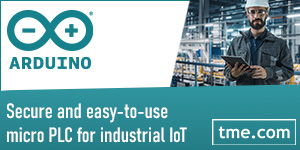The manufacturing industry has always been at the forefront of technological innovations. From the advent of the steam engine in the 1700s to the invention of the assembly line by Henry Ford, manufacturing has been one of society’s greatest drivers of change.
Today, the manufacturing industry is once again experiencing a series of unprecedented changes.
The proliferation of robotics, advanced sensors, device connectivity, and advanced analytics has led to modern Industry 4.0 manufacturing. Now, the field is poised for yet another change, with a transition into the world of Industry 5.0.
This blog discusses the differences between Industry 4.0 and Industry 5.0, the challenges facing the evolution from Industry 4.0 to Industry 5.0, and some ways to make the transition as seamless as possible.
Industry 4.0 Versus Industry 5.0
At present, most modern factories are classified as “Industry 4.0,” and are commonly referred to as “Smart Factories.”
Industry 4.0 is marked by a significant shift toward a more interconnected and intelligent manufacturing environment, leveraging advancements such as the Internet of Things (IoT), artificial intelligence (AI), cloud computing, and edge computing. This era introduces the capability to gather, analyze, and use vast amounts of data in real time, which enhances decision-making processes, predictive maintenance, and overall operational efficiency. Ultimately, the result is a comprehensive advancement over Industry 3.0 to create more agile, efficient, and responsive manufacturing systems. However, Industry 4.0 remains focused mainly on the manufacturing side of things, answering questions about how to make more products faster, more consistently, of better quality, and at lower cost.
Industry 5.0 expands the technological advancements of Industry 4.0 and augments them by considering human factors. It seeks to redefine roles within manufacturing and beyond—encompassing supply chains and entire operational landscapes—to create a more cohesive, adaptive, human-centric, and sustainable industrial environment.
This paradigm shift moves beyond viewing machines as mere tools for productivity and advocates for a collaborative synergy in which technology enhances human capabilities, creativity, and decision-making processes. The fundamental aim is to achieve a balanced symbiosis between advanced technological systems and the unique insights and values humans bring to the table, ensuring that industrial progress supports both efficiency and the well-being of society at-large. Within this industrial revolution, a significant focus lies on fostering seamless communication and interactions between humans and machines.
Drivers of the Evolution
While the differences between Industry 4.0 and Industry 5.0 are clear and defined, understanding the larger societal and geopolitical factors driving this evolution is essential.
One major driver of Industry 5.0 is resilience in the face of global challenges.
Starting in 2020, the COVID-19 pandemic and subsequent disruptions exposed vulnerabilities within global manufacturing networks. In the face of these challenges, Industry 5.0 emphasizes resilience and flexibility, aiming to build systems that can adapt and recover from unforeseen events more efficiently.
In a similar vein, the COVID-19 pandemic heightened consciousness surrounding worker health and safety. Industry 5.0 seeks to leverage the technological advancements of Industry 4.0—namely, sensors and vision systems—to mitigate risks, create safer work environments, and minimize accidents.
Naturally, another significant driver of this evolution is the demand for more innovative, sustainable, and reliable products that can reach the market faster. But how will Industry 5.0 enable these changes?
Industry 5.0 will leverage the integration of digital twins with generative AI, which simplifies the prototyping of new concepts. This integration accelerates the development process and enhances the quality of the final product by allowing for the evaluation of multiple design options in terms of cost, performance, quality, and durability before a product reaches the market. Furthermore, Industry 5.0 has a major focus on sustainability, with products designed to be more recyclable and less polluting. Thus, driven by technological advancements and changing consumer demands, Industry 5.0 holds the promise of delivering innovative, high-quality, and sustainable products more efficiently.
Hurdles for the Evolution
Despite the clear benefits and reasons for moving toward Industry 5.0, the evolution is not without its challenges. Paradoxically, the still ongoing adoption of Industry 4.0 is a major hurdle to adopting Industry 5.0.
Between the advent of Industry 3.0 and the emergence of Industry 4.0, nearly four decades elapsed. Remarkably, in just one decade, we transitioned from Industry 4.0 to the dawn of Industry 5.0, a testament to the rapid pace of technological advancement and its transformative impact on manufacturing and production.
Consequently, now we are witnessing an overlap in which many companies are still in proof-of-concept evaluations of Industry 4.0 while others are leveraging Industry 5.0 already. Currently, while large corporations have made substantial investments in Industry 4.0, the adoption rate among smaller manufacturing sites and processes through full-scale digitalization projects remains relatively low.
Major barriers to adopting of Industry 4.0 technologies include the high capital expenditures needed to purchase new equipment, as well as new skill sets and expertise, along with a lack of trust in modern paradigms such as cloud computing and reliance on data security. Until the industry at large fully embraces Industry 4.0, Industry 5.0 will take some time to reach widespread adoption.
Another challenge of adopting Industry 5.0 is that it represents an inherently different mindset and approach to manufacturing.
Unlike previous evolutions (e.g., Industry 3.0 to Industry 4.0), the Industry 4.0 to Industry 5.0 evolution is not so much a challenge of technological advancement but more so a challenge of mindset advancement. Integrating new digitalization projects requires strong alignment all the way from the chief executive officer to the operator to the manufacturing floor. The organization needs to have a clear vision of what its version of Industry 5.0 will look like and then deploy this idea at all levels. This calls for new processes and ways of operating, including more delegation from the operators to those on the floor.
Conclusion
Like the many industrial revolutions in human history, modern manufacturing is currently on the precipice of another remarkable evolution. The transition from Industry 4.0 to Industry 5.0 marks a significant change in the manufacturing world.
Achieving this transition requires an industry-wide mindset shift in how our factories operate, how workers interact with machinery, and how the whole ecosystem can converge. Once this happens, we can enter the era of Industry 5.0, enabling greater sustainability and resilience, increased worker safety, and a more robust supply chain.







